Memory, Psychedelics and the underground group 'Cathedrals on Cannabis' - A talk with Rupert Sheldrake at London's Breaking Convention # 1
Getting the chance to hear Rupert Sheldrake speak was unmissable - to meet him in person and have a chat was unforgettable. A ground breaking weekend, gold dust for the curious.
So why do people visit cathedrals and other holy or mystical sites on Cannabis? First, here’s some info on Rupert Sheldrake and his work.

Rupert Sheldrake
Some thinkers think outside the box and some think so far out of the box they are simply rejected by the mainstream consensus.
Rupert Sheldrake with his theory on Morphic resonance, alongside his work on telepathy, precognition and his other mind bending research, is a contemporary hero pushing forward with theories that challenge the scientific status quo. Of course it makes him a modern day pariah – just as Galileo was in his time – a basic google search will find all the usual prolific sceptic sites authoritatively debunking his work, with troll dominated Wikipedia leading the way. Wikipedia dominated by Trolls, you might ask? Yup! but-hey-that’s-another-steemit-post.
Rupert Sheldrake’s infamous 2013 TED talk was pulled by TED as being too controversial, yet I’ve just counted 3 million you tube views from just two ‘pirated’ uploads. I guess many more have seen his talk, so like kids whknow the best chocolates are always hidden out of reach on the top shelf, we know banned films are a must-see!
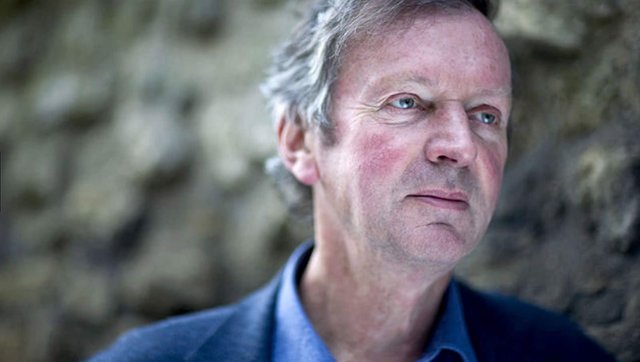
Rupert Sheldrake speaking at Breaking Convention 2017
Rupert Sheldrake started his talk at London's Breaking Convention by setting the scene with Terrence McKenna’s quote “Give me one free miracle and we will explain the rest,” in reference to the fact that all of science’s apparent rationality still relies on one apparently supernatural occurrence - the big bang theory, which as Sheldrake says, “suggests that all the matter in the universe, all the energy and all the laws that govern it…. appeared in a single instant.”

A friend, another of the speaker at the conference and I struck up an easy conversation with Sheldrake upon a chance encounter.
I have a stack of personal stories that personally confirm telepathy or similar and at a certain points when I recount them I often say said, “and Sheldrake says…” or “as Lyall Watson wrote…” to add credence to my story. However this time, as I arrived at a critical point in a few of my stories, Sheldrake himself chipped in and said, “Yes, and if you read my book you will find an experiment that proves…"
Sheldrake is in the true sense of the word, a gentle man. He speaks softly, using words devoid of ambiguity and sentences laced with dry humour. He moves his arms like puppet who has broken free of his strings - maybe this is more literal than I imagine. He has a highly endearing manner.
A moment in time never to forget. It also seems from our conversation that there is the possibility that our future projects might interconnect. Exciting.
Back to Sheldrake’s theories.
So what is the theory of Morphic Resonance?
Morphic Resonance is a delightfully fascinating theory that proposes that everything in nature has a collective memory that resonates on the basis of similarity. Once knowledge or behaviour is learnt within a species, it is passed to all the others not by teaching, observation but by resonance.
An embryo in the womb of the mother will tune into the resonance of previous beings, pick up on the collective memory of the species and learn it’s form, nature and behaviour. So, Morphic resonance suggests a baby chimp learns how to be a chimp by resonance with the mother and others of same the species and these characteristics are not derived from the DNA as we previously thought. DNA seems to have been vastly overestimated with a function of genes accounting for the proteins that a body makes, not individual characteristics.
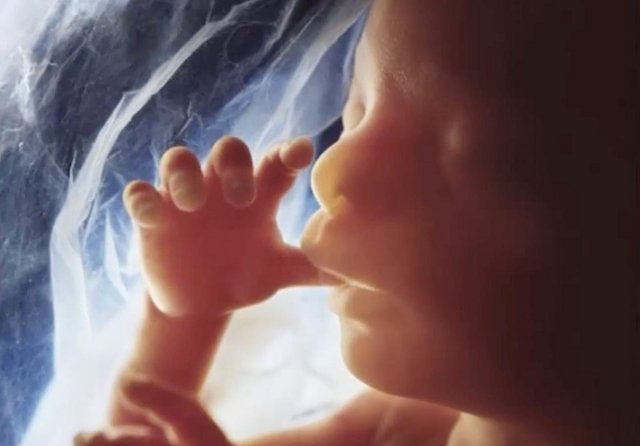
Maybe the most famous example of Morphic Resonance is that of rats given a maze. For example if rats within an experiment in London were timed on how long it takes them to crack a maze, (finding food or escaping a trap) then unrelated rats the other side of the world given the same maze would crack the maze a fraction more quickly than those previously – even though they are not related and have never met. A new set of rats will then crack the maze a fraction more quickly than the previous group and onwards with the maze being cracked a fraction quicker by each new group of rats. This experiment suggests that the rats have learnt as a species, not as an individual.
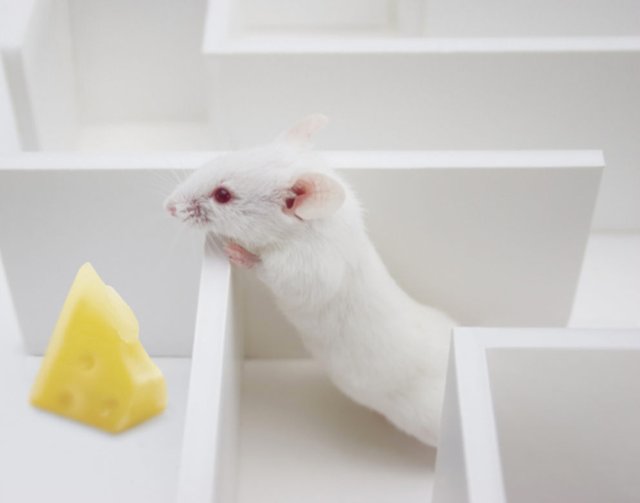
The blue tits that got the cream.
My personal favourite is the story of the common British garden bird the blue tit. In time long gone each morning each house within the country would hear the trundle of a milk float delivering the daily order of milk which would be placed on the households doorstep. The milk was in a distinctive glass bottle enclosed with a tin foil cap. During hot summers any bottles left outside in the uncharacteristic heat would have their contents expand and the tin cap would be lifted off under a growing column of expanding cream.

Blue tits found these bottles and took a taste for the cream, finding it highly nutritious. The summer heat retreated and the milk remained safe, until there were reports from a small area in the south of England, where blue tits now denied of cream feast, were breaking through the tin foil lids, raiding the cream from the closed bottle. This behaviour spread slowly to neighbouring villages as blue tits presumably copied the rewarding behaviour.
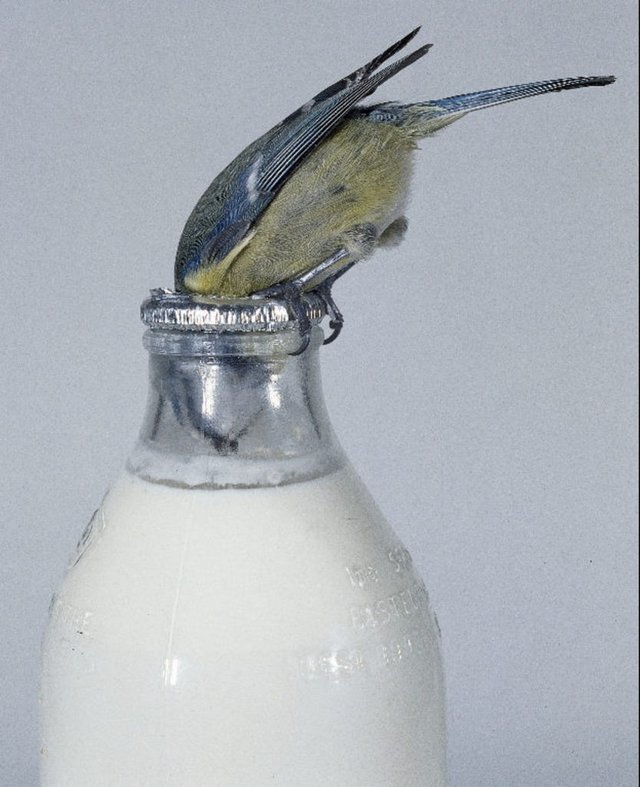
Then, within a few days, there were reports all over the country of the milk bottle break-ins. There hadn’t been time for the tactic to spread bird to bird, so something else seemed to be at play. Had simply enough birds learnt the trick that all birds within the country now shared that information by resonance? Had some sort of critical mass of knowledge been reached? This behaviour has now died out as the milk bottle delivery has all but stopped as reported 14 years ago here.
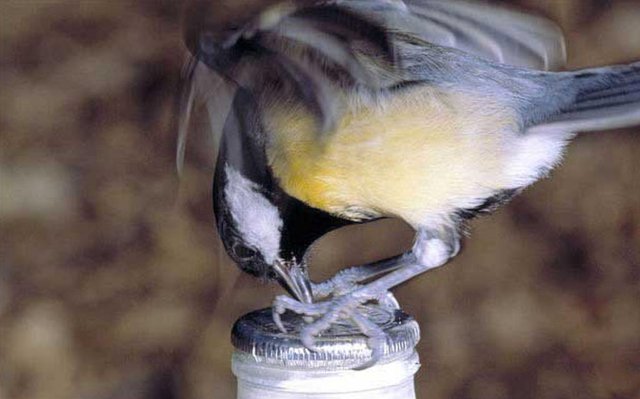
Cattle fooled by Fake Cattle Grids
Another interesting example is how farmers have managed to fool cattle with fake cattle grids. The idea of cattle grids being bars placed over a deep hole making it treacherous for the cattle to cross, but safe for motor vehicles. Texan ranchers have discovered it worked with cattle who had never experienced cattle grids themselves. So how do the cows who had seen a cattle grid, fear the optical illusion of a painted one? Is it Morphic Resonance bringing up a memory held within the species?
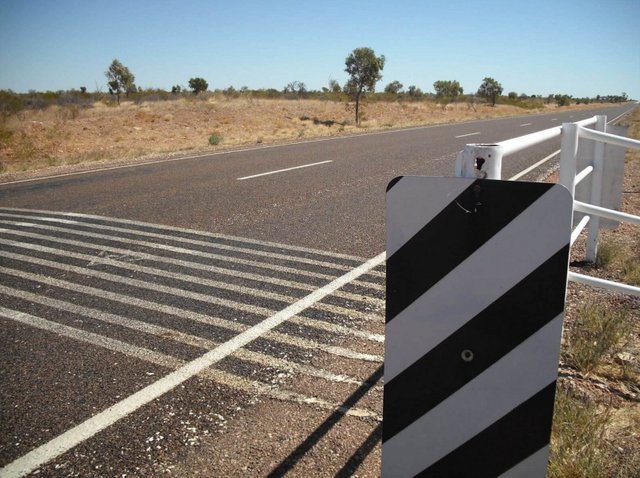
Babies are wary of the Visual Cliff
Babies also fall foR the same optical illusion. Babies seem to be hardwired to understand perspective and won’t crawl over the line of an optical illusion of a visual cliff, even though the surface is secure and safe. This old photo shows the experiment “the Visual Cliff" in action.
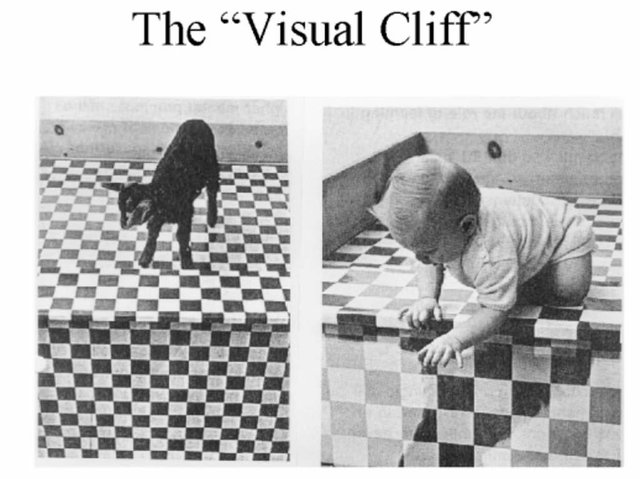
A more recent possible example of Morphic Resonance is how we are all amazed when babies, before they can walk or talk, know the precise value of a smart phone and intuitively swipe through photos with their finger as if performed a zillion times before - the amazement of Grandma who still struggles to unlock her phone.

Is memory held in our brains?
So Morphic Resonance suggests that memory is in the cell, not in the brain. Sheldrake describes the brain as more of a receiver than a hard disk of memory. The modern parallel would be the difference between having folders stored on your own laptop compared to storing them in the cloud on an external server.
The metaphor describes how our memories could actually be stored in the cloud of nature and not in the hard drive of the brain itself.
I have some more thoughts on technology and nature but-hey-that’s-another-steemit-post!

Morphic resonance and Inanimate objects
Sheldrake explains that the hypothesis of Morphic Resonance gets even more interesting when it comes to apparently inanimate objects. Substances, things, stuff all seem to show memory too. New chemicals can be hard to crystallise the first time, yet with each new attempt crystals form more quickly suggesting the method of crystallisation is being learnt once a precedence is set.
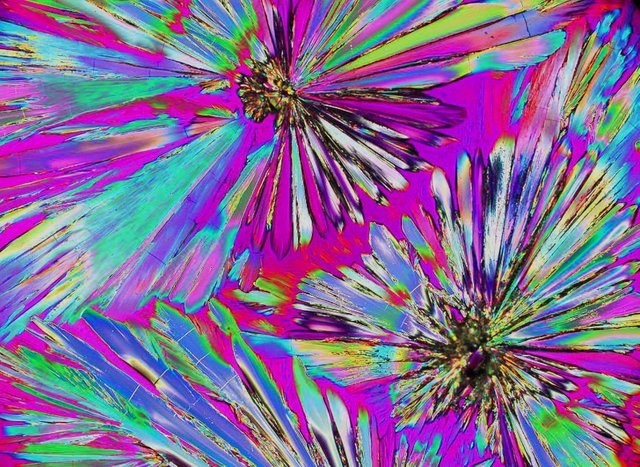
This leads on to explain that human memories or emotions can also be saved within inanimate objects, the vibration becoming encapsulated. For instance in the way we stalk of walls having memories and how we often feel good about certain places yet uneasy about others. It explains the idea of haunted houses where past trauma is literally etched in the deep fabric within the walls of buildings. On the opposite end of the scale it explains the awe inspiring atmosphere of spiritual places where people have prayed for centuries – and the energy of ancient monuments that attract us like magnets and fascinate us eternally.
Using Psychedelics to enhance the shared access to ancient memory
Sheldrake mentioned the use of psychedelics in such places of deep spiritual significance as a growing trend. The psychedelics enabling people to tune in to the energies and memories stored and accessible at the sites. This is apparently happening all around the world from the Wailing Wall to Machu Picchu.
Apparently in Europe there is a current underground group called ‘Cathedrals on Cannabis.’
Yup, that got a huge laugh from the audience…

Sheldrake then mentioned something I hadn’t heard before. The idea that the ingestion of a particular psychedelic tapped into the huge ancient memory of the culture that used that drug. He pointed out that those for example taking Ayahuasca had visions of snakes and Jaguars. This happens even if the Ayahuasca is taken it outside of her home South America, suggesting the plant gives access to the ancient shared memory of all past users, whose primeval fears of the Amazon predators would have featured heavily in such ritual and collective memory. He also supposed that the actual ritual practiced was a tuning in mechanism to all past rituals and even to those in the future.
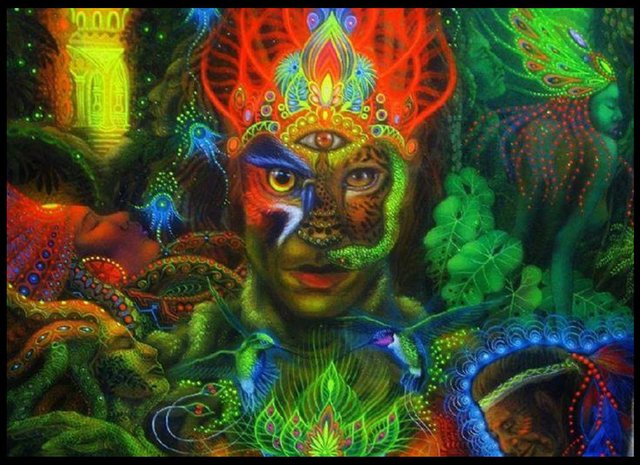
Sheldrake then posed an experiment that could test this hypothesis.
He pointed out that there are many new Psychedelics were being discovered or invented. If the first use of a never-used-before Psychedelic, was limited to 100 or so participants in a very specific setting with distinct colours, shapes and smells, would future users of this Psychedelic in different environments then tune into this predesigned setting, sensing the same shapes, colours and smells?
Psychedelics, plant medicine, truth-sayers and the future.
Psychedelics is a fascinating field. Due to the exponential growth and sub culture acceptance of plant medicines like Ayahuasca and their incredible medical properties, this field of medicine seems about to explode into the mainstream. So much more to say in this, but-hey-that’s-another-steemit-post!
Sheldrake appears to be comparatively on his own in the world of science, on the periphery of acceptability with a comparatively small band of merry die hard supporters. A modern day Truth-Sayer who stands up to the scientific community and dares to point out that the Scientific Emperor indeed might be missing his clothes.
Sheldrake mentioned at the conference that with time, more and more scientists and university professors come up to him, whisper their support, yet still plead for anonymity for fear for their jobs.
The collective will and power of the herd seems to be holding mass progress at bay, for now.
However, I think the force of Morphic Resonance will hold true.
I believe that we will soon hit a critical mass where, just like the blue tits learning to peck through the silver foil top milk bottle to access the nutritious cream, we will all soon be quoting Sheldrake as one of the forerunners in the new understanding of resonance, the power of healing plant medicine and realms of ancient knowledge that we have only just barely scratched the surface of.
Here’s to a very bright new future!
If would like me to write more, please encourage me by upvoting this post and please do follow me. Of course, I would also love to hear your thoughts in the comments below!
Much Love.
TM
PS Here is Rupert Sheldrake's banned TED talk 'The Science Delusion.'
Wow, great work! As it is not possible to re-esteem this article I will copy and paste the URL into my upcoming post. I plan to ask the crowd (those with technical skills in particular) to work on a telepathy app.
Some time ago I got in touch with Rupert Sheldrake because I asked him if he would be in favor for my app idea. We corresponded for a while. But as I am not a technician and not able to program this project went to sleep. I want to wake it up again. Why? I think it would be a lot of fun to create an app so everybody can train his or her sensitivity.
Right now I am searching steemit for interested people who will promote what I am having in mind. I will publish my correspondence with Sheldrake and the concept of my app idea.
I have great respect of Sheldrakes attempts to look at science in a new - and also funny and entertaining - way.
Would you use an app on your phone which trains your intuition by guessing whom out of your three people is going to contact you? Like Sheldrake says, people get better in time. I myself would love to have this kind of tool.
Have a good day! Greetings from Germany/ Hamburg
This is a great idea. Superb. Must forge ahead. Let me know any ideas/movements on this! Followed...
Thank you! I am happy you like it. Here is my post from today:
https://steemit.com/technology/@erh.germany/are-you-telepathic-join-in-for-a-science-project-and-resonate-inspired-by-rupert-sheldrake
Great Post & deffinarley food for thought - I'm sure I will be thinking about this all day - can't wait for the next one ...
Loved your post. Have been interested in Rupert Sheldrake for a while so it was great to read your piece. Looking forward to the next read:) Keep them coming:)
Thanks @lauren.webb - Sheldrake is a forward scout in modern times breaking the current mould, and terribly undervalued. More posts? I'm typing away!;)
I want some of that looks interesting
Yes, loads to think about and some little experiments to try...